Case Study: How to Add 7 Notes to Your Vocal Range in One Hour
What would YOU do with one hour, some simple vocal exercises and a mission to expand your vocal range?
Last Monday, I started the 30-day singing challenge to show the students of my singing course Master Your Voice that there’s no reason you can’t expand your vocal range by 5 notes or more.
That’s the same guarantee that I give to everyone that enrolls in my complete singing course.

But talk is cheap, right?
So I decided to put my money where my mouth is and challenge one student to expand their vocal range by 5 notes in just one hour!
That’s why it was perfect timing when Dave Stewart reached out to me asking about my course Master Your Voice.
Let me tell you a little about Dave:
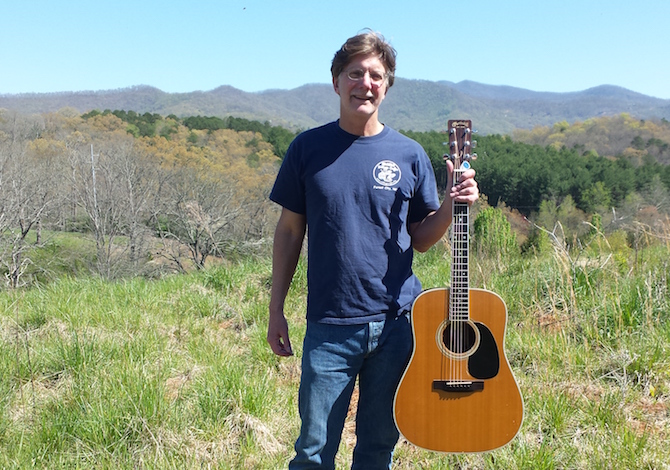
Dave Stewart is 66 with grey hair and a scruffy beard. He hails from Franklin, North Carolina and has a charming southern accent.
And before our lesson, Dave hadn’t done a whole lot of solo singing.
True, he’d always been in bands, but when it came to singing, the other musicians would say “take that microphone away from that boy!”.
But now Dave is in a folk duo with a woman who can “really sing”. So Dave thought it would be good to get some voice training.
So we were starting from scratch and here’s where we ended up….
The Quick Stats:
Before we jump in to the results, there’s something you need to know:
Measuring singing progress is really tough.
That’s probably why most singing courses just give you a vague promise of “satisfaction guaranteed” or “guaranteed results” like this.

I wanted my singing course, Master Your Voice to be different. That’s why I guarantee that every student who enrolls will add 5 notes to their range in 30 days.
But how do you measure something like that in singing?
In order to fix this problem, I created the vocal range finder app.

That way, not only will you be able to see your vocal range, but you’ll also be able to measure your singing progress over time.
So before we met, I asked Dave to use the Range Finder app to measure his vocal range.
Here were his results:
According to the range finder, Dave could sing from an E2-E4 and he told me that he thought he was a bass.
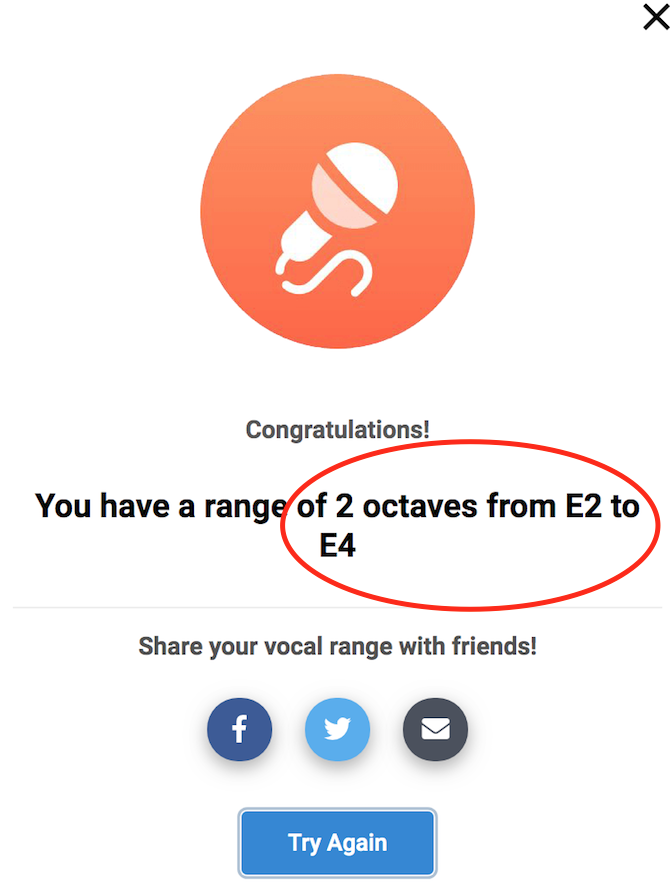
That meant that he had two octaves of range and the same voice type as Johnny Cash or Barry White.
So where did we end up?
Well, within 5 minutes of meeting him, I could tell that Dave was not a Bass. Actually he’s a Tenor.
Now, I can’t tell you how common this is for beginning singers! Many vocalists think that because they can’t hit high notes means they’re a low voice type like a Bass or an Alto.
But if you never learn to sing high notes, you may always think you’re a lower voice type, even if it’s not true.
I had a sneaking suspicion that we could add a LOT of range to Dave’s voice.
So where did we end up?
Well, by the end of one hour, Dave could sing from an E2-B4 and he KNEW he was a Tenor.
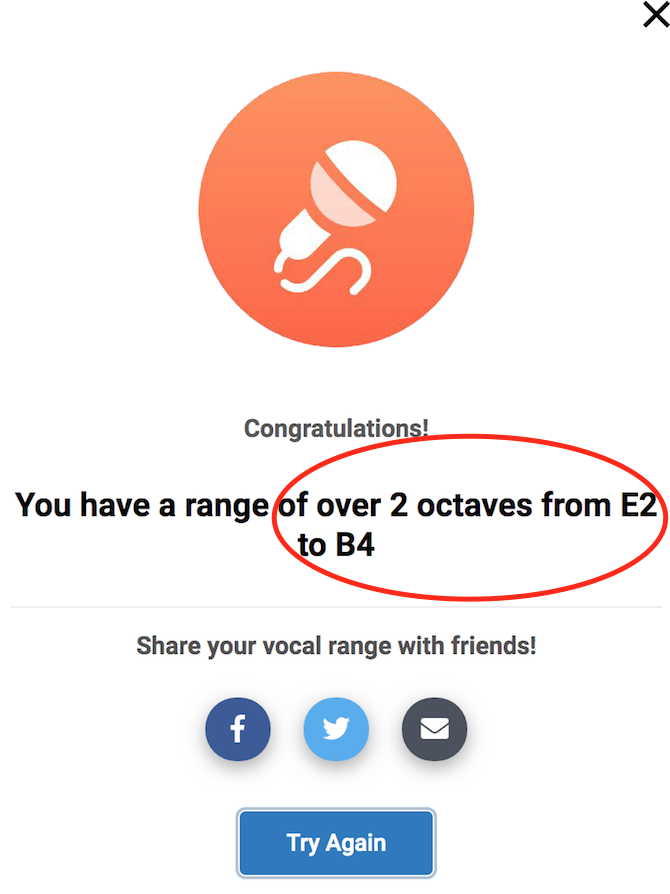
That means that Dave expanded his vocal range by 7 notes!
Before:

After:

Now, I’m going to tell you exactly how he did it.
How Dave Added 7 Notes To His Voice
This is all based on the same structure and exercises that you find in my complete singing course Master Your Voice.
We just did things a lot faster!
First, I asked Dave about what he most wanted to improve about his voice.
He took a minute, then he answered that he wanted to sing with a better vocal tone and not strain as much when he sang high.
But here’s the crazy thing:
Most of the time beginning singers will “reach” for their high notes and that adds strain to their voice.
And this strain is exactly why they can’t hit the high notes!
For instance, if you think that a note is high, you might strain or push your voice in order to get it.

So I explained to Dave that we would assess his voice and see whether we were missing anything.
After a 5 minute assessment, I could hear that Dave could sing in his chest voice (the notes at the bottom of his voice), but that he couldn’t sing in his head voice (the notes at the top).
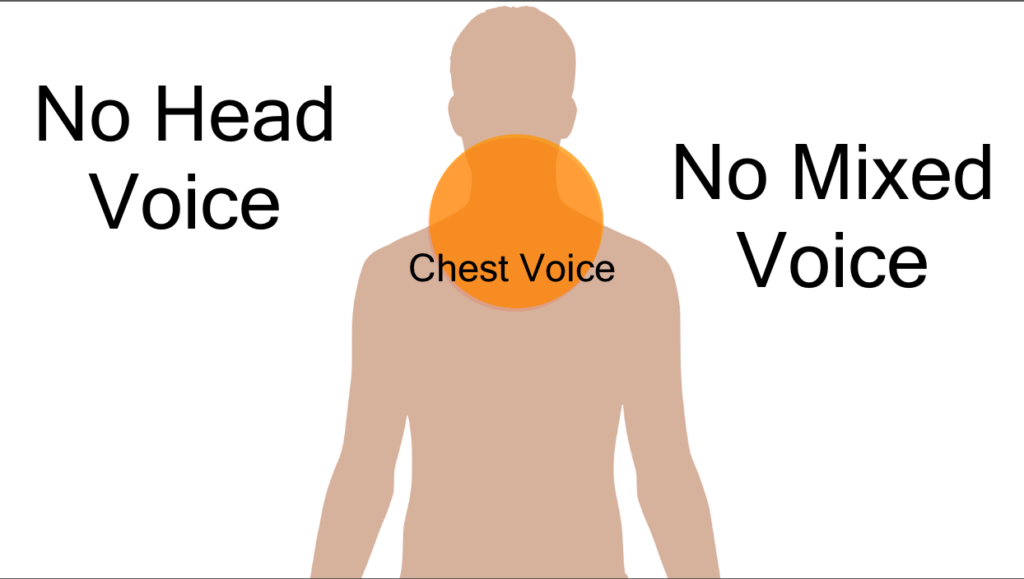
Ding! Ding! Ding!
At that moment, I knew that when Dave actually started learning to sing with some head voice, he could EASILY add 5 notes or more to his range (head voice exercises are in the third phase of Master Your Voice).
But would those exercises work for Dave?
We had to find out!
So within 10 minutes of meeting him, I immediately threw Dave into lip trills; one of the best vocal exercises for a voice type like his (Phase 1, Exercise 2 in Master Your Voice).
You can see Dave practicing the lip trill here:
But more importantly, I ENCOURAGED Dave to flip into his head voice.
I can’t tell you how hard this is for some students!
Some students are so afraid of letting go of their chest voice, that they limit their range.
But in order to hit high notes, you have to use some head voice!
The opposite can also be true:
In many other cases, singers are afraid of using their chest voice because it sounds ugly to them.
In Dave’s case, he was afraid of letting his voice flip into his head voice, even if it meant he had to limit his range.
But Dave followed the exercises correctly and let his falsetto come in at the top.
Without knowing it, he added 5 notes to his range just by letting the top of his voice come in more.

What worked?
The key here is identifying the thing that’s holding you back and doing exercises to fix it.
That’s why the first 4 sections of Master Your Voice (Warm Ups, Breath Control, Chest Voice and Head Voice) are designed to get you right through that obstacle.
Want to Nail Those High Notes?
Every singer wants to expand their range. Expand Your Range Fast will show you how to finally hit high notes in your voice without straining. Expand your range by 5 notes or more!
If it worked for Dave, I guarantee it will work for you!
So about 20 minutes into the lesson, Dave was flipping into his falsetto.
But I couldn’t just leave him there!
After all, falsetto is a great way to start singing in head voice, but it’s a pretty silly sound.
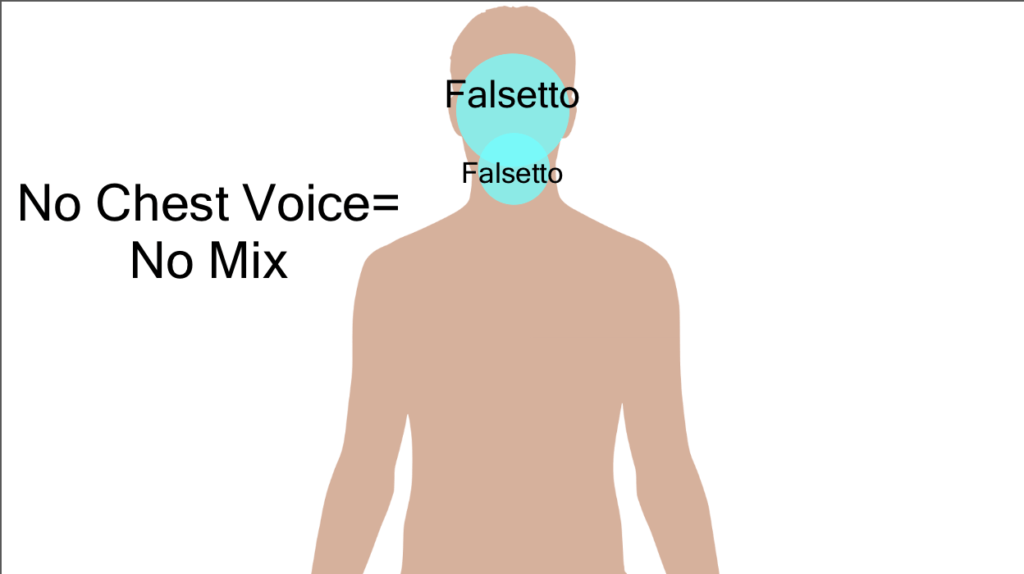
So the next step was to get Dave to sing with mixed voice.
What is mixed voice?
Mixed voice is the blend between chest voice and head voice so that all the notes in your voice sound evenly strong and rich.
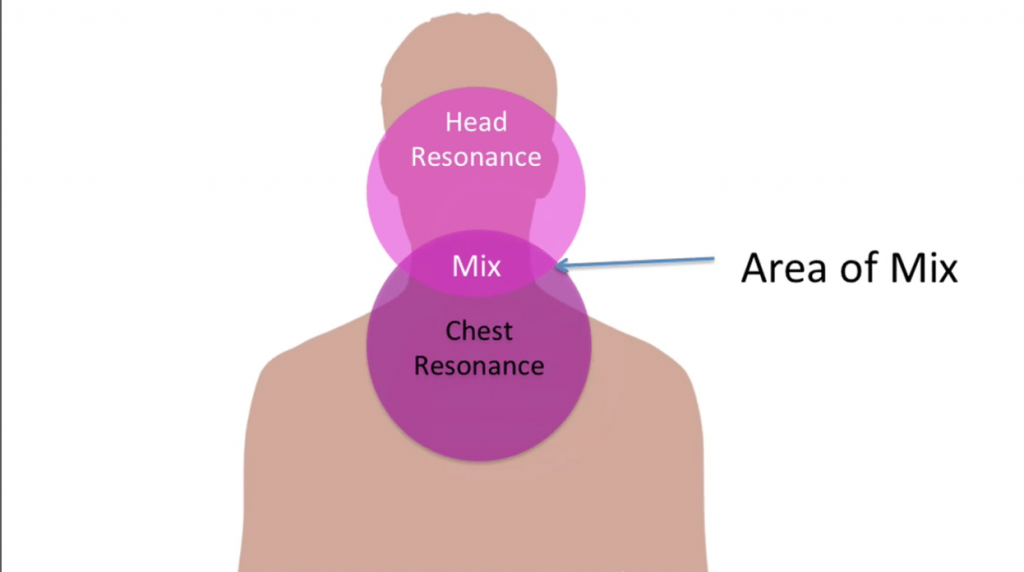
That means hitting high notes without falsetto and learning to sing with more power! I cover mixed voice in depth in phase 5 of Master Your Voice.
And even though I was only about 20 minutes into working with Dave, I knew it was time to help him sing in a mixed voice.
So I threw Dave on a 1.5 octave “Gee” exercise (Master Your Voice phase 5, exercise 3).
Then I drew back in horror as Dave slid back into his old habit and started pulling chest voice up to his high notes.

I can’t tell you how common this is!
When you’re first starting out, all the bad habits are hard to break.
That’s why it’s so important to keep an eye on what’s holding you back.
In this case, once Dave realized that he just needed to release into his head voice again, everything snapped right back into place.
And that’s when the magic happened!
As soon as Dave allowed some of his head voice back in the “Gee” exercise, he started mixing!
By the way, here’s a great video where I walk you through how to do the “Gee” exercise:
We were about 30 minutes into the lesson and rather than singing in falsetto, Dave was singing in mixed voice!
But we weren’t done.
But Could He Do It In a Song?
After all, voice lessons shouldn’t JUST be vocal exercises.
You have to APPLY what you’ve learned to songs as well.

That’s why Master Your Voice has 10 in-depth song tutorials that walk you through the most common mistakes in songs and how to fix them.
So when I asked Dave to pick a song that was a bit difficult for him, he picked “Country Roads” by John Denver.
Playing it perfectly on guitar, I listened closely to Dave as he sang.
Could he keep the same beautiful mixed voice in the song?
As soon as Dave started singing, I could see he was in trouble!
All of the tension and strain that had kept Dave from singing high notes in the beginning came back with full force when he started singing the chorus:
“Country roads, take me home
to the place, I BELOOONNNNGGG”.
The “belong” on an E4 in the chorus was as flat and strainy as when we began.
Again, this is super common!

Oftentimes your progress in vocal exercises goes away the moment you start singing songs again.
It’s almost like all your bad habits are just waiting to come back as soon as you sing a song you know.
And Dave was right back where he started; pushing his chest voice.
So about 40 minutes in, I showed Dave a very simple trick:
I asked Dave to sing the melody of the chorus on “Gee” instead of the lyrics.
What happened?
The moment that Dave changed the lyrics to “Gee”, he went back to singing with a beautiful mixed voice.
You can see the results of this exercise in this video (starts at around 27 minutes in):
“Man”, Dave said, “I’m hitting those notes way easier than when I started!”
And he was absolutely right!
It’s almost always easier to sing a vocal exercise than a song.
That’s why in Master Your Voice, I teach you to sing the melody of the song on a friendly vocal exercise and how to apply that feeling to a song.
So after 5 minutes of practicing the vocal exercise, I asked Dave to sing the chorus on the lyrics again.
And that’s when it happened:
Dave sang the chorus perfectly. There was no strain, no tension, and he was perfectly on pitch!
“That’s easy!” Dave said, astonished.
So I took a few minutes to describe how Dave could apply this workflow to his own songs and continue to improve his voice.
The Results
When the dust settled and the hour was over, Dave had gone from singing with only two octaves, to two-and-a-half for a total of 7 notes added to his range.


But the most important thing was that Dave knew exactly how he needed to sing his song in order to keep it from going flat and straining.
Now, there’s a whole lot more work to do to continue improving his voice and Dave knows that.
So that’s why you get lifetime access to everything in the course when you enroll in Master Your Voice.
After we were done: Dave exclaimed “Dang! That was easy!”.
What You Can Learn from Dave’s Lesson:
Here were a few of the takeaways from Dave’s lesson:
- Have a way to measure your vocal progress during your vocal training
- Be aware of the ONE thing that you really want to improve about your voice
- Find the biggest obstacle standing in your way of singing better–in Dave’s case it was learning to sing in his head voice
- Use proven vocal exercises to help you overcome those obstacles
- If a note is flat or strained, that doesn’t mean to try harder. It means to take a different approach.
- Work with songs that are hard for you, but not a nightmare. If Dave had brought in “Bohemian Rhapsody” I immediately would have chosen a different song for him that he could learn to improve fast
- Try doing friendly vocal exercises on songs before you sing them. Then go back and sing the lyrics with the same feeling
- Learning to sing is a lifelong process. Even though we added 7 notes to Dave’s range, there is still a long way to go to make those notes sound perfect
- Dave was a fantastic guitar player and musician before he ever took lessons. Learning to sing is about becoming a good musician. Picking up an instrument is never a bad idea
- Old habits are tough to break. So have access to a teacher that can get you unstuck if your old bad habits come back
What it all boils down to is your belief in being able to improve your singing voice.
If you really want to sing and you’re serious about improving your voice, then all you have to do is work with the right singing techniques and you will sing better.
Period.
We added 7 notes to Dave’s voice in just 60 minutes. So if you want to expand your range and hit higher notes, Master Your Voice will get you there!
In Master Your Voice, I’ll give you the system, the vocal exercises and the support to expand your vocal range and gain more vocal control.
What’s stopping you from having the voice of your dreams?

Want to Nail Those High Notes?
Every singer wants to expand their range. Expand Your Range Fast will show you how to finally hit high notes in your voice without straining. Expand your range by 5 notes or more!





4 Comments
Hey Matt, since we had this lesson I bought your course and am starting to practice daily. I do have a question though, some of the excersises go above my highest note I can hit……. should I just not sing on those notes and sing the ones i can? I could lower them as well, so the top note would be my highest note. I wonder if its better to try to hit notes above my range or would this do damage?
Hey Dave, that’s a great question! My recommendation would be to push yourself 10 – 15% outside of your comfort zone.
In other words, if there are five modulations of the scale that are totally out of your reach, maybe work on the first one or two of them and see if you can reach them.
Over time, you should naturally feel that you’re more capable of hitting higher and higher notes.
Of course, since I can’t hear you, there’s the possibility that some old habits have snuck in.
But in general, I found that I can usually push my students a little bit harder than they would naturally go themselves.
I love being singing
Nice Tony!